Exploring Chiba Prefecture: 20 Day Trip Activities from Tokyo

Chiba Prefecture, which neighbors Tokyo, is an attraction-filled area blessed by the sea and nature. Visitors can enjoy Tokyo Disneyland and fun theme parks, shopping, beaches, and great nature views on a day trip! Read more for a complete sightseeing guide to Chiba.
See, Play, and Experience Chiba!

Photo by Pixta (top right and bottom photos)
Neighboring Tokyo is Chiba Prefecture, home to Narita International Airport which welcomes millions of travelers coming in from overseas. The perfect area for a day trip from the city, it's only an hour from Tokyo Station by limited express train or shuttle bus.
Chiba is also famous for Tokyo Disney Resort which brings in thousands of visitors year-round, and the several large-scale outlet malls the prefecture has. Travel slightly further to find the rich, beautiful nature along Chiba's majestic coastlines and serene agricultural lands.
This article will introduce five areas of Chiba. These areas include the Narita International Airport area, where you'll find famous shrines, temples, and traditional streets, alongside the Yoro Valley with its natural photogenic landscape.
Please make use of this article to understand each area's distinct features and use them as hints when planning out your travel route!
Table of Contents
- ◆ Area Overview and Transportation
- ◆ Tokyo Disney Resort Area
- ∟1. Tokyo Disney Resort: An Internationally-Renowned Theme Park
- ∟2. Funabashi Andersen Park: An Amusement Park for Nature Lovers
- ∟3. Ekoin Cafe Terrace: A Peaceful Temple
- ◆ Narita International Airport Area
- ∟4. Naritasan Shinshoji Temple: Boasting over 1,000 Years of History
- ∟5. Sawara: A Scenic Canal District
- ∟6. Katori Shrine: Chiba’s Most Powerful Spiritual Spot
- ◆ Kisarazu and Mount Nokogiri Area
- ∟7. Mitsui Outlet Park Kisarazu: A Full Lineup of Popular Brands
- ∟8. Egawa Beach: A Miraculously Wonderful View in Tokyo Bay
- ∟9. Nomizo Falls and Kameiwa Cave: See a Heart-Shaped Water Reflection
- ∟10. Mount Nokogiri: Enjoyable Panoramic Views
- ∟11. Mother Farm: Cute Animals and Seasonal Flowers
- ◆ Yoro Valley and Kamogawa Area
- ∟12. Yoro Valley: Venture off the Beaten Track in Chiba
- ∟13. Kominato Railway: Travel Along a Local Retro Line
- ∟14. Isumi Railway: Fun Stopovers Along the Way
- ∟15. Kamogawa Sea World: Unique Performances by Sea Creatures
- ∟16. Oyama Senmaida: Japan’s Surviving Agricultural Landscape
- ∟17. Katsuura Kaichu Park: A Walk Under the Sea
- ∟18. TRAYCLE Market & Coffee: Linking Producer and Consumer
- ◆ Choshi and Kujukuri Beach Area
- ∟19. Kujukuri Beach: Japan’s Largest Sandy Beach
- ∟20. Inubosaki Observation Deck: A White-Colored Deck with an Ocean View
- ◆ Must-Try Food in Chiba
5 Highlight-Filled Areas

Chiba is located just east of Tokyo and is a peninsula extending into the Pacific Ocean. The size of the prefecture is more than double the size of Tokyo at approximately 5,000 square kilometers. Due to this, it's recommended you rent a car when traveling across the areas within Chiba.
If you're visiting from Tokyo, there are many railways and express buses to travel within the prefecture. You can also easily travel to popular cities such as Narita or Kisarazu via railway in an hour and a half one-way.
Tokyo Disney Resort Area

Picture from Vegetarian And Vegan At Tokyo Disney! Disneyland And DisneySea Guide
Tokyo Disneyland and Tokyo DisneySea are two theme parks loved by people of all ages from around the world. It's just 15 minutes from Tokyo Station on the JR Keiyo Line to Maihama Station. The world of Disney will greet you the moment you step out of the station. Bring you family and friends to experience the magic of Japan's Disney theme park during anytime of the year!
This area has plenty of hotels for accommodation, so we recommend staying in them to see Tokyo Disney Resort and travel in Chiba.
Tokyo Disney Resort Area Highlights
Narita International Airport Area
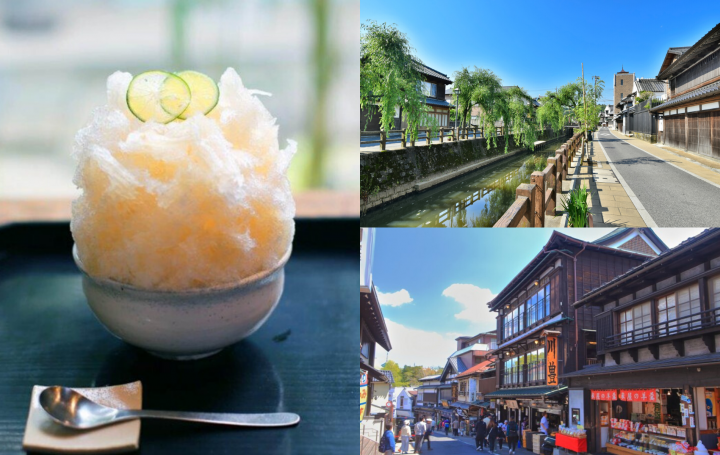
Left picture courtesy of Inae, right picture by Pixta
The Narita International Airport area—Japan's gateway to the skies—is used annually by 40 million passengers. Though its present image is very modern and international, it's actually an area that has a very long history.
There are many busy towns centered around temples and shrines including Naritasan Shinshoji Temple, a site of worship since ancient times, and Katori Shrine which still exists to this day. Walking through these old towns will give you a taste of what the Edo Period was like.
Narita International Airport Area Highlights
Kisarazu and Mount Nokogiri Area

Photo by Pixta
Located in west Chiba, Kisarazu overlooks Tokyo Bay and is filled with a variety of things to do. The Kisarazu area includes many shopping outlet parks, popular climbing spot Mount Nokogiri, and rare sights by the seaside to explore.
Accessing the area by car from Tokyo is extremely convenient as the Tokyo Bay Aqua-Line Expressway, a toll road connecting Kanagawa Prefecture's Kawasaki and Kisarazu City, extends across the Tokyo Bay. The night view here can be seen from Umihotaru, a rest stop with shopping and restaurants along the expressway. There are even some people that visit in the evenings and early mornings just to see the scenery. You can enjoy both the journey and the destinations when traveling!
Kisarazu and Mount Nokogiri Area Highlights
Yoro Valley and Kamogawa Area
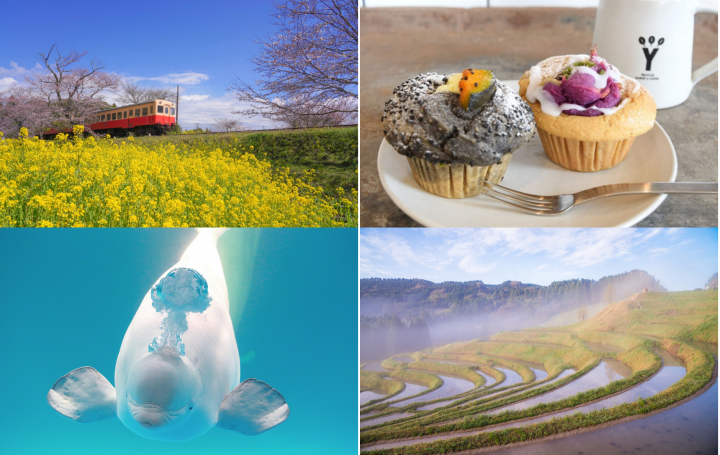
Upper left and bottom right picture by Pixta, top right picture courtesy of TRAYCLE Market & Coffee, bottom left picture courtesy of Kamogawa Sea World
Yoro Valley is a nature-rich area located roughly in the center of the Boso Peninsula. If you travel out to Kamogawa situated along the Pacific Coast, you'll find a popular aquarium and the perfect spots to interact with nature.
This area is a bit of a trip from Tokyo city, as it is one hour and a half by car or two hours and a half by train. Nevertheless, we recommend taking a railway trip if you have the time. By taking the Kominato Railway, you can witness the breathtaking landscapes as the local train travels through the serene, rural sights of the area!
Yoro Valley and Kamogawa Area Highlights
Choshi and Kujukuri Beach Area
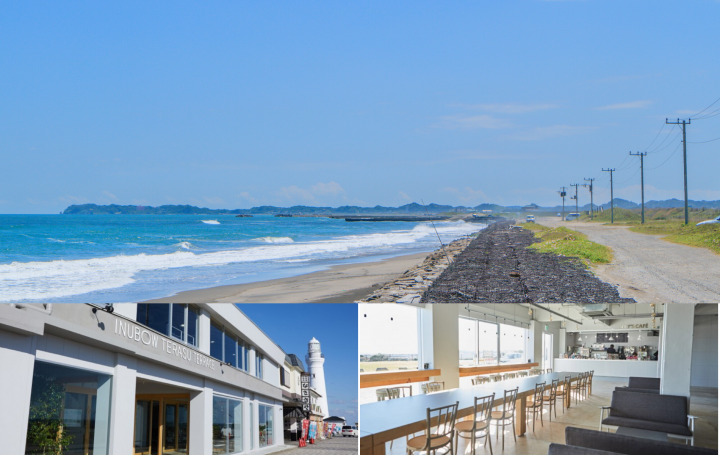
Top picture by Pixta, bottom pictures courtesy of Inubow Terasu Terrace
Choshi, a city that protrudes into the Pacific Ocean, is a town boasting Japan's largest fishing yield. Enjoy Kujukuri Beach, a beach that stretches along the long, beautiful coastline with the city.
The city area is also perfect for feasting on tasty, fresh seafood. You can also take a swim, go surfing, or try out the many other marine activities during the summer! This area is three hours by train or two hours on the JR Limited Express Shiosai from Tokyo Station to Choshi Station. You can also conveniently access the city in two hours via Keisei express bus. It's a bit of a travel, but reaching the destination will be worth every minute!
Choshi and Kujukuri Beach Area Highlights
1. Tokyo Disney Resort: An Internationally-Renowned Theme Park
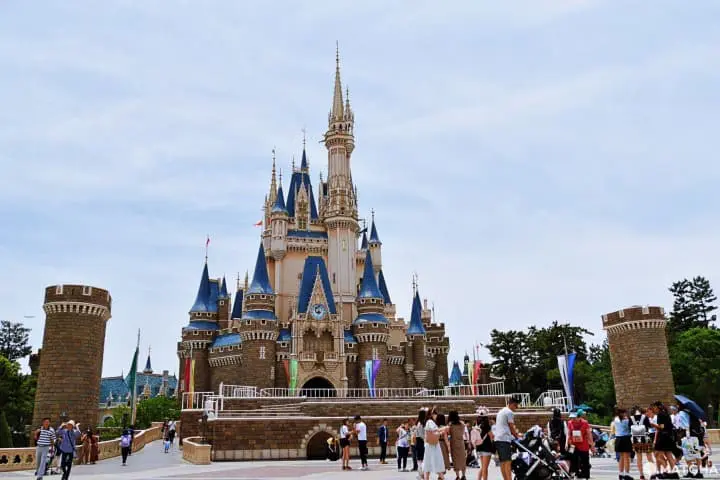
Picture from A Perfect Family Outing! Head To Tokyo Disneyland With The Kids
Tokyo Disneyland is a theme park that has been extremely popular with both domestic and international visitors ever since opening back in 1983. A second Disney theme park, Tokyo DisneySea, subsequently opened in 2001. Tokyo Disneyland may feel familiar to those who have visited its overseas counterparts, but Tokyo DisneySea is themed off of the myths and legends of the sea, making it a enjoyable theme park for both children and grown-ups alike. These two theme parks collectively combined are called Tokyo Disney Resort.
The giant resort has hotels with shuttle buses that run between the hotel you stay at and each of the Tokyo Disney Resort establishments, which makes it very convenient for overnight stays and easy access to the parks. IKISPIARI is a popular commercial facility that is also connected to Maihama Station, so we recommend stopping by for shopping and dining during your visit to Tokyo Disney Resort.
Hotels near Tokyo Disney Resort
Read also
2. Funabashi Andersen Park: An Amusement Park for Nature Lovers
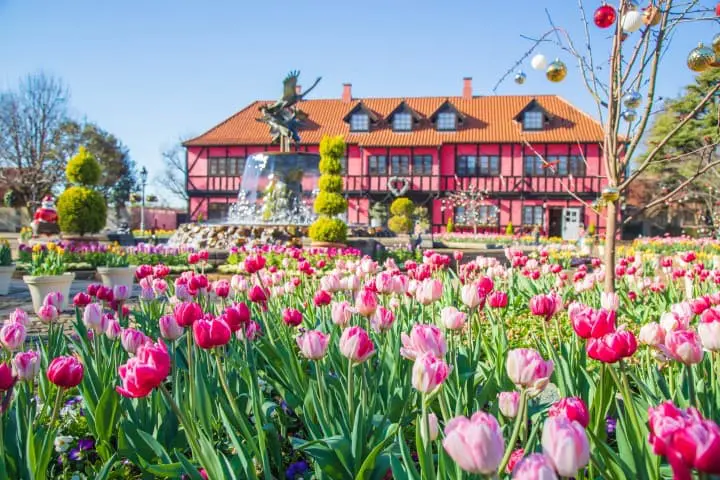
Photo by Pixta
Funabashi Andersen Park in Chiba Prefecture's Funabashi city is a sprawling park inspired by Denmark.
The park is divided into five zones with different environments, such as the athletic and nature experience areas. You can enjoy this park in many ways depending on your personal tastes! The park's large windmills crafted by professional artisans and multicolored flowers will make you feel as if you've stepped right into a fairytale.
You can also play in the gigantic athletic area or have a barbeque in the nature-filled park. Even adults won't be able to stop their inner child from coming out at this huge park! You can have as much fun as you want here, and the entrance fee is very reasonable at just 900 yen!
Read also
3. Ekoin Cafe Terrace: A Peaceful Temple

Picture courtesy of Ekoin
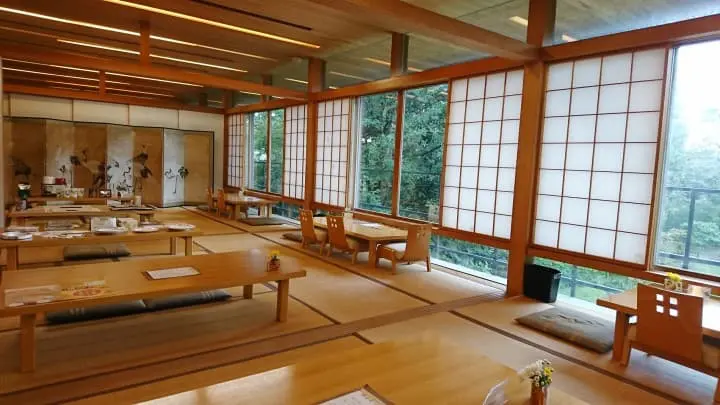
Picture courtesy of Ekoin
Ekoin is a peaceful temple in Tokyo that was founded back in 1657. The branch temple is located in Ichikawa City, Chiba Prefecture.
Here, you'll be greeted by a modern style temple surrounded by nature after walking through the vermillion-lacquered gates. There is a the cafe terrace on the grounds, open to the general public.
The building, originally established to host memorial services, operates as a cafe by the clergy during their spare time. You'll feel calm and at peace as you drink coffee while admiring the attentively cared-for garden in front of you. Their special hot coffee (500 yen) is offered with free refills, so stay as long as you please.
The cafe is closed regularly on Thursdays, but it may also be closed on other days depending on the clergy's schedule. Be sure to check the official website (Japanese) for their operating hours before visiting.
Hotels near Jodo-shu Ekoin Ichikawa Betsuin
4. Naritasan Shinshoji Temple: Boasting over 1,000 Years of History
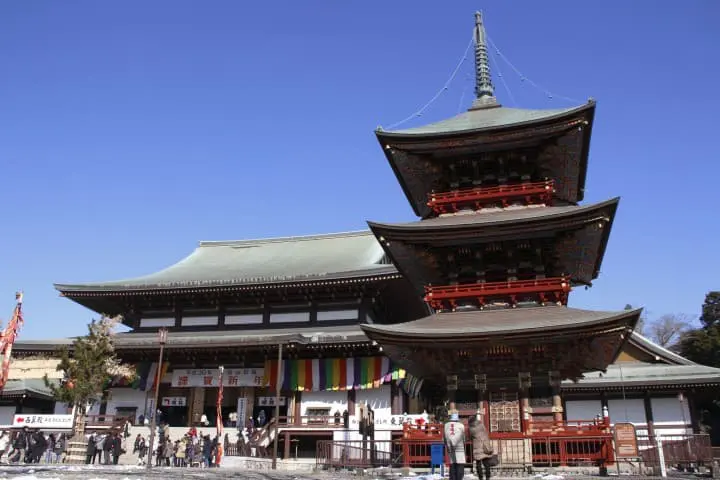
Photo by Pixta
About ten million people visit Naritasan Shinshoji annually. On New Year's Day, approximately three million people from all across the country come here for hatsumode, the first temple visit of the year.
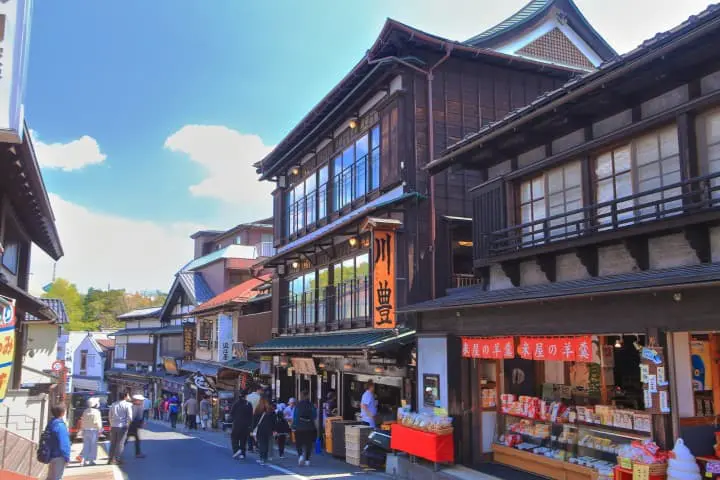
Photo by Pixta
The Naritasan Shinshoji Temple is closest to Narita Station along the Keisei Line. The bustling street that leads from Narita Station all the way to the temple is about 800 meters in length and is lined with a variety of different shops that have been in business for many years.
There are a number of unagi (grilled eel) restaurants—a Narita specialty—along with traditional accessories shops that sell goods made from bamboo. For those looking for sweets on this street, there are a number of Japanese confectioneries offering the delicious combination of matcha green tea and anmitsu (an agar jelly dessert served with red bean paste) that simply delight all temple visitors! Many of the shops are housed in old, traditional Japanese buildings. The scenery of nostalgia-laden buildings lining the street will make you feel as if you've traveled back to the past.
Hotels near Naritasan Shinshoji Temple
5. Sawara: A Scenic Canal District
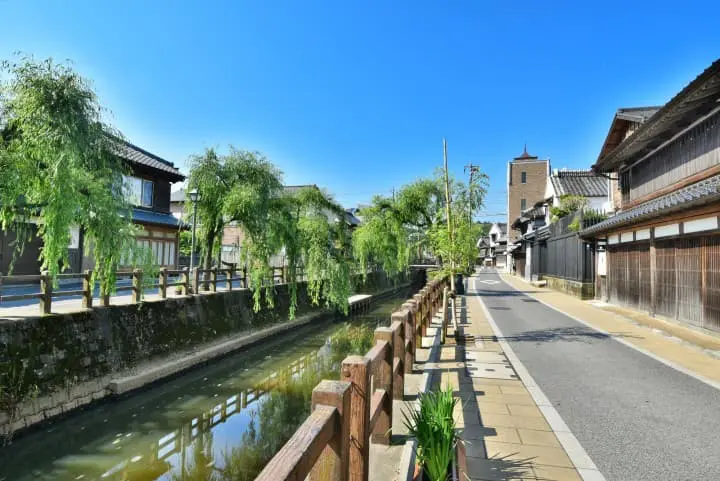
Photo by Pixta
There are several towns nicknamed Little Edo in the outskirts of Tokyo. These towns have been bestowed this title for having retained their old samurai residences and landscape, allowing visitors to experience a sliver of what the Edo Period was like. Chiba Prefecture's Sawara is one such town.
Sawara was a town that prospered thanks to water transportation during the Edo Period. The entire town has historically preserved its district lined with streets occupied by merchant shops and machiya (townhouses) along the Ono River. If you visit Sawara, we recommended hopping on board a small boat to enjoy a peaceful 30-minute ride downstream (Boat Tour Town Course Fare: 1,300 yen).
The busiest seasons in these towns are when the irises and hydrangeas bloom in June, when the grand festivities are hosted in July, and when the autumn season approaches in October. If you want to take your time sightseeing comfortably, try visiting after October once the heat of summer has subsided.
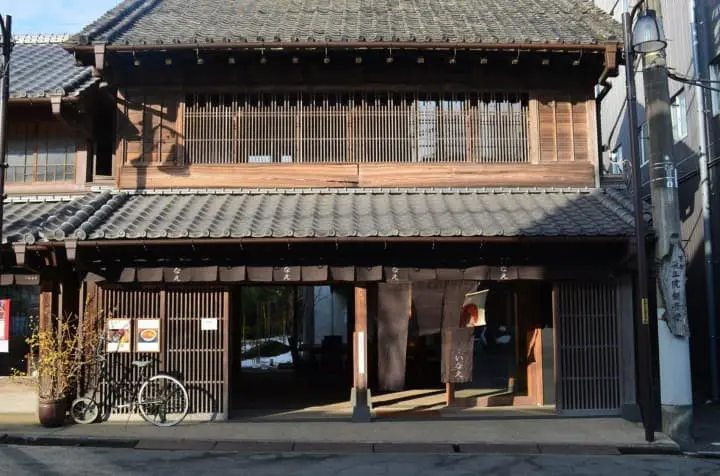
Picture courtesy of Inae
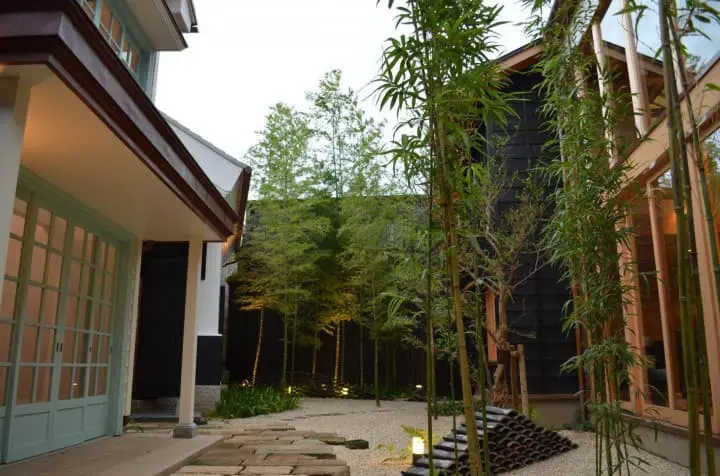
Picture courtesy of Inae
Inae is a Japanese-style cafe we hope you stop by during your stroll in Sawara.
The building was renovated into a cafe with a shop and gallery from a townhouse built over 130 years ago. There is a Western-style dwelling and warehouse in the courtyard, which allows visitors to experience the traditional lifestyle this region had in the past.
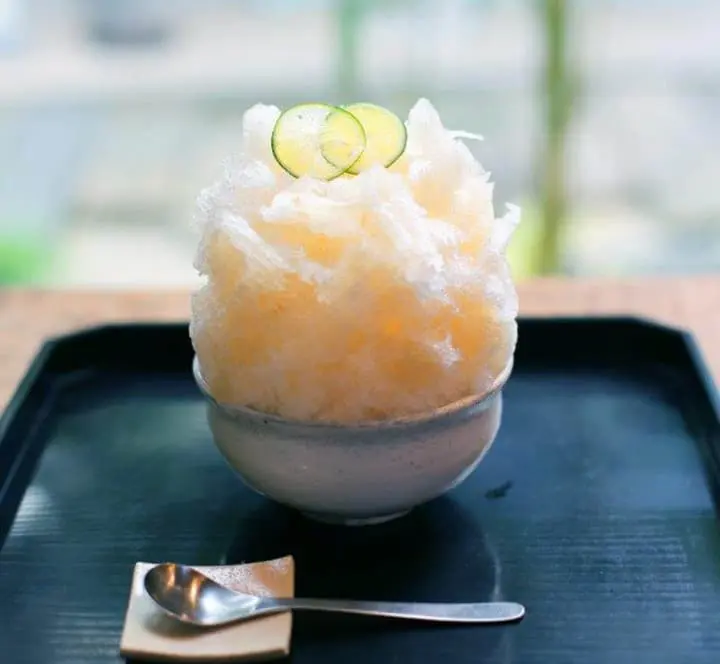
Picture courtesy of Inae
For a cool treat, their shaved ice is especially popular and can be eaten year-round. Its splendid appearance is also the secret of its popularity. In the wintertime, savor the cafe's zenzai (a red bean soup), a warm and delicious Japanese dessert.
Read also
6. Katori Shrine: Chiba’s Most Powerful Spiritual Spot
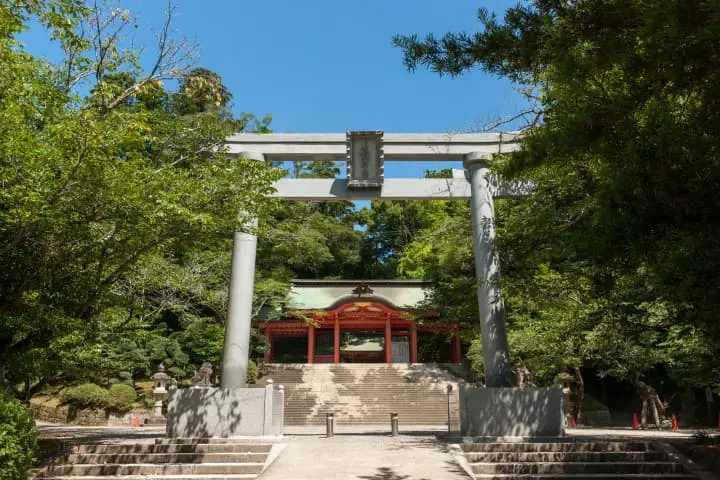
Photo by Pixta
This ancient shrine is said to have been constructed in back in the year 634. This sacred site reveres the war god Futsunushi-no-okami and visiting is believed to help increase your luck in competitions. Take a lap around the main hall to receive the shrine's blessings.
The sanbonsugi, a cedar tree with a trunk split into three, is another famous spiritual spot to visit on the shrine grounds. The center trunk is hollow and it's said that if you make your wish while standing in that hollowed trunk, you will receive the tree's blessings. Many visitors also take photos of the tree to set as their phone's wallpaper, perhaps for extra good luck. Be sure to take a picture during your travels as well!
Read also
7. Mitsui Outlet Park Kisarazu: Deals on Popular Brands
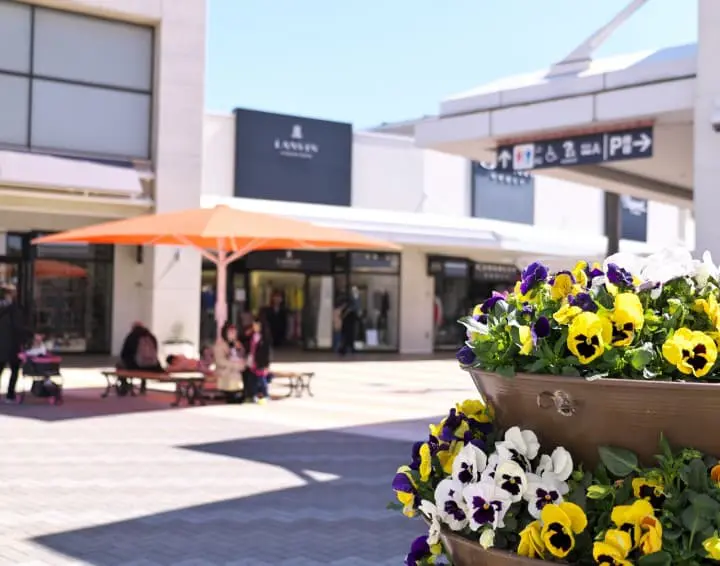
Photo by Pixta
Mitsui Outlet Park Kisarazu is an expansive outlet mall housing many well-known shops from around the world. There are over 300 popular store brands, from fashion to outdoor supplies, and daily necessities that have locations within this mall. The mall's total area measures at an astounding 215,000 square meters!
The mall is also filled with many cafes and restaurants, making it a great place to spend an entire day both shopping and relaxing. Direct buses to the mall can be taken from Tokyo Station, Shinjuku Station, and Shibuya Station and you'll arrive in about an hour (around 1,300 yen one-way). Prices and reservation availability will differ depending on your boarding point, so pleasemake sure to check the Keisei Bus official website (Japanese) for more details on prices and times.
Hotels near Mitsui Outlet Park Kisarazu
8. Egawa Beach: A Miraculously Wonderful View in Tokyo Bay
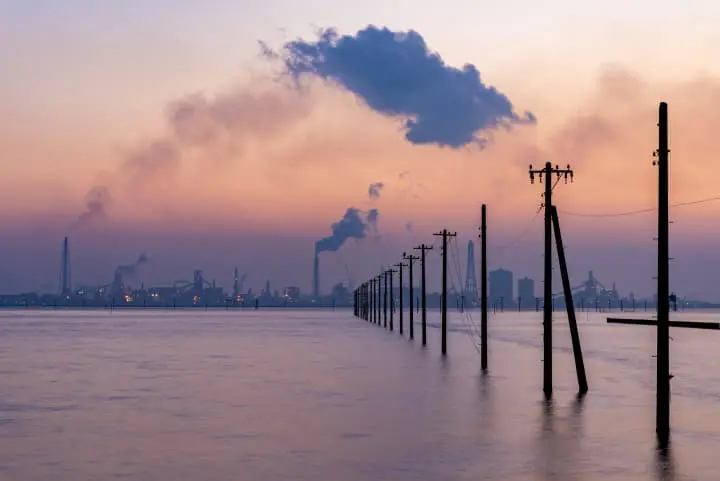
Photo by Pixta
There is a spot in Chiba Prefecture's Kisarazu City where countless utility poles are lined a kilometer across the tideland in Tokyo Bay. This is Egawa Beach, and the scenery has a striking resemblance to a scene in the Studio Ghibli film Spirited Away.
The beach becomes particularly popular right before the sun sets, creating an incredible sight that combines the evening sky and night view of the nearby power plant. The water is like a reflective mirror on days with little wind and waves. On these days, the waters are said to resemble Salar de Uyuni, a picturesque spot in Bolivia.
Entry into the beach outside of the shellfish season between mid-March and July is prohibited as a measure for accident prevention. The parking lot near the beach is also a great outlook point. This shore is just ten minutes by taxi from JR Iwane Station.
9. Nomizo Falls and Kameiwa Cave: See Heart-Shaped Water Reflection

Photo by Pixta
Nomizo Falls and Kameiwa Cave are other scenic spots in Chiba regarded for their beauty. In Kimitsu City, where the waterfalls are located, there is a natural park called Shimizu Stream Square not far from the Yoro Valley.
The waterfall flows into the cave, and early in the morning when the sun's rays shine into the cave entrance, the sunlight will appear as a shower of light! During March and September the surface of the water will reflect the sunlight, romantically creating a shape of a heart. During the early summer seasons fireflies flutter about the waterside, and in the autumn you can view the surrounding foliage change into beautiful colors across the area!
The route from Tokyo Station takes about 1 hour and 30 minutes ride on the Axie Express Bus. After arriving at the Fureai Park Kimitsu (Japanese) bus stop, take a taxi for another five minutes to get to Shimizu Stream Square.
10. Mount Nokogiri: Enjoyable Panoramic Views

“Peek Into Hell” (Photo by Pixta)
Conveniently accessible from the city, Mount Nokogiri is a spot that even new hikers and children can safely enjoy climbing. On the summit of Mount Nokogiri is the 1,300-year-old Nihonji Temple. The temple is regarded as a very sacred place and is home to Japan's largest stone Buddha statue.
If hiking isn't for you, you can also take the ropeway that's located just ten minutes on foot from JR Hamakanaya Station. The spot on the summit known as "Peek Into Hell" is an absolute must-see view! Here, visitors are able to look out over the endless horizon while peering straight down at the sheer cliffs from the front of a protruding rock. The act of viewing the area is as thrilling as how spectacular the scenery is!
Hotels near Mt. Nokogiri
11. Mother Farm: Cute Animals and Seasonal Flowers
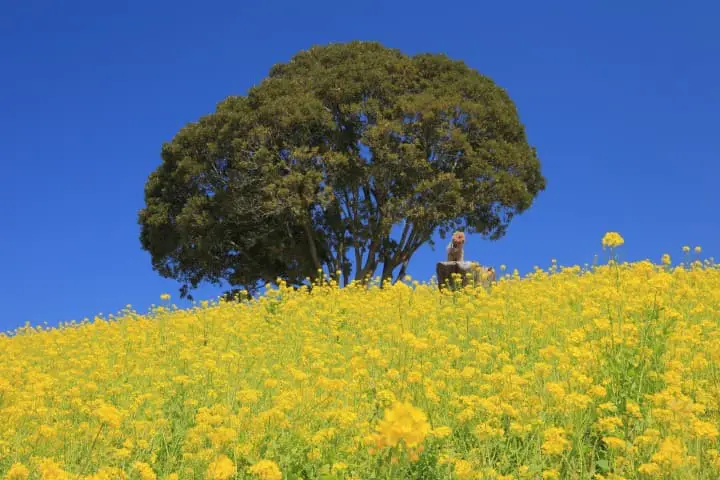
Photo by Pixta
Arguably one of the best sightseeing farms in the Kanto area, Mother Farm is a farm where you'll find an assortment of sheep, alpacas, horses, rabbits, and other adorable animals living their lives. You'll feel your heart melt when you see their cute appearance up-close while feeding and petting them!
Moreover, there are an abundance of seasonal flowers such as rape blossoms in spring and scarlet sage flowers in the summer which cover the vast flower fields like a carpet during full bloom, creating an amazing picturesque scene. You can also go strawberry and blueberry picking at the farm, allowing you to fill your entire day with an assortment of fun activities!
The bus to Mother Farm operates from JR Kimitsu Station (720 yen for adults, 360 yen for children; cash only). Express buses also operate from Tokyo Station to Kimitsu Station with a travel time of around one hour.
Read also
12. Yoro Valley: Venture off the Beaten Track in Chiba
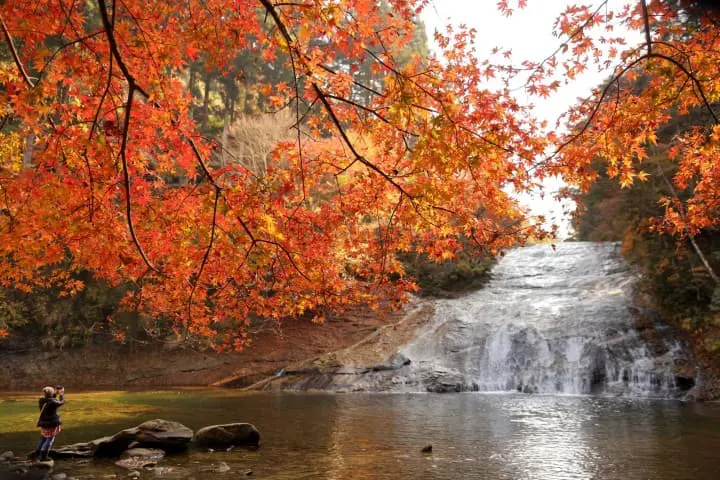
Photo by Pixta
Yoro Valley, located roughly in the center of the Boso Peninsula in southern Chiba, is a popular spot to view autumn leaves changing color. The valley has a two-kilometer long hiking path that passes five waterfalls along the way. This path allows you to see waterfalls of all sizes from up close while walking along a promenade enveloped in nature. It's almost impossible to believe that this breathtaking natural beauty is juston the outskirts of the busy and bustling modern metropolis like Tokyo!
Goriyaku no Yu is a hot spring that is situated right inside the Yoro Valley (1,100 yen entry fee). Any fatigue you have after walking about the valley will vanish as you soak your body in the spacious open-air baths. The hot spring also houses a restaurant, making it an ideal resting spot to dine at after taking a hike.
This area is about two hours and a half from Yoro-Keikoku Station, which is the nearest station from Tokyo Station via the Goi Station. Get on board the retro Kominato Railway from Goi Station!
Read also
13. Kominato Railway: Travel Along a Local Retro Line

Photo by Pixta
The Kominato Railway Line is an adorable local train colored in red and green that travels mainly through Chiba Prefecture's Ichihara City. This kind of retro train—having been manufactured between 1961 to 1977—is something you don't get to see often nowadays.
The nostalgic railway line passes by several different rural areas, making the scenery provided from the windows the main attraction. You'll see bright, eye-popping yellow rape blossoms in particular, which flood the fields between mid-March to early May.
What's especially famous is the scenery that can be seen between Satomi Station and Tsukizaki Station. Here, the cherry blossoms will begin flowering during the month of April, making the railway all the more charming as it passes through the magnificent showing of flowers.
14. Isumi Railway: Fun Stopovers Along the Way

Photo by Pixta
When it comes to traveling using charming retro railways, the Isumi Railway Line is another popular option that lets you travel through Chiba's Isumi City. It connects with the Kominato Railway Line at Kazusa-Nakano Station, so you could even plan a retro railway journey that involves transferring from one line to the other.
In the springtime, 15 kilometers of the 27-kilometer route becomes filled with bright rape blossoms. The view from the train windows is just beautiful of course. However, many people will exit the train midway so that they can take pictures of the the flowers with the train in the scenery.
Several of the stations have many other sights to see, like the traditional townscape of Otaki Station and the sprawling rural landscape of Nittano Station. With the One-Day Pass you'll have an unlimited stopovers during your journey, so we highly recommend it when traveling through this area. (Weekday Pass: 1,200 yen, Weekend & Holiday Pass: 1,500 yen).
15. Kamogawa Sea World: See Unique Performances by Sea Creatures
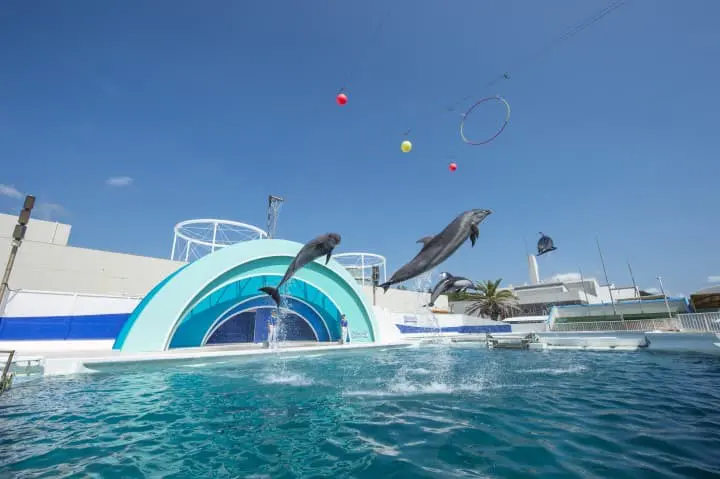
Picture courtesy of Kamogawa Sea World
Kamogawa Sea World celebrated its 50th anniversary back in 2020! This marine-themed attraction is highly popular for its performances with dolphins, sea lions, and other sea animals. One performance in particular, the killer whale's performance, is nicknamed the "King of the Ocean" and is very fun to watch! You won't find performances like these anywhere else!
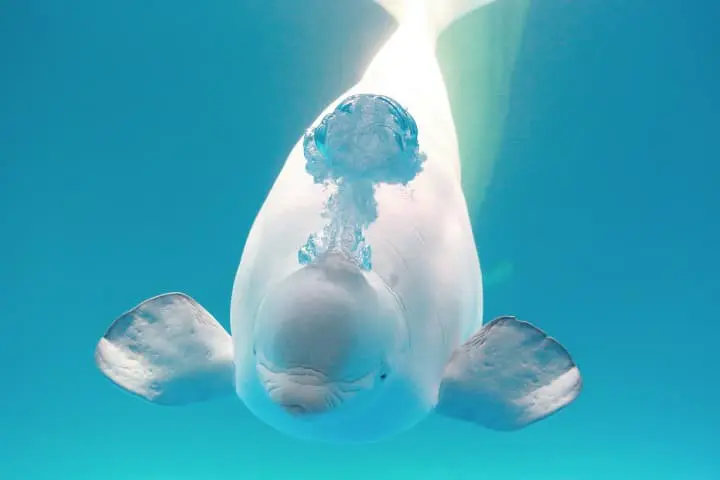
Picture courtesy of Kamogawa Sea World
Beluga whales, or white dolphins, have an endearing appearance and are the Kamogawa Sea World's mascot. There are free shuttle buses to the aquarium that visitors can take from JR Awa-Kamogawa Station.
Hotels near Kamogawa Sea World
16. Oyama Senmaida: Japan’s Surviving Agricultural Landscape
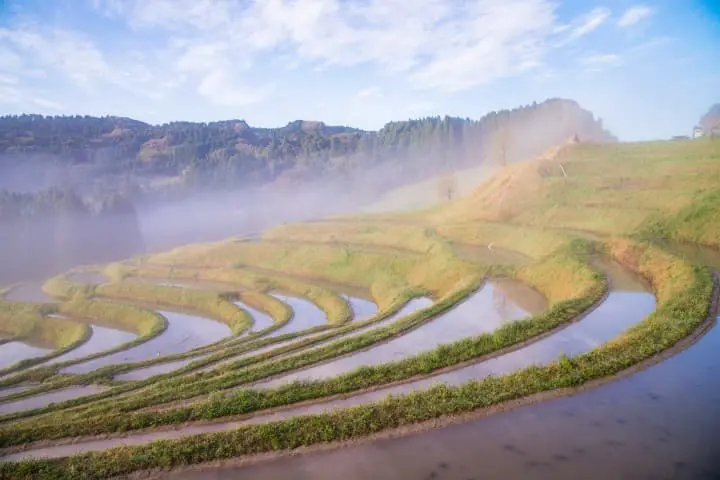
Photo by Pixta
Terraced water paddies made along mountain inclines and valleys are called tanada in Japanese. This type of agriculture emerged to make it possible to farm even in mountainous areas and sloping terrain. Today, many people come to visit the paddies with their cameras to capture photography of the beauty of this landscape.
Oyama Senmaida is the closest terraced rice paddies to Tokyo. You can take a bus from Awa-Kamogawa Station, then arrive at Kozuka Station before walking for 20 more minutes to reach the terraced water paddies. The rice paddies become filled with water from April and May, creating a spanning view of glassy surfaces that reflect the bright blue sky. What a truly marvelous sight!
Gonbei is a restaurant in an old Japanese home sitting near the top of the terraced rice fields. Here, you can try out some dishes made with chikko rice noodles. Come and relax with this unique regional food after successfully capturing the perfect photo!
17. Katsuura Kaichu Park: A Walk Under the Sea
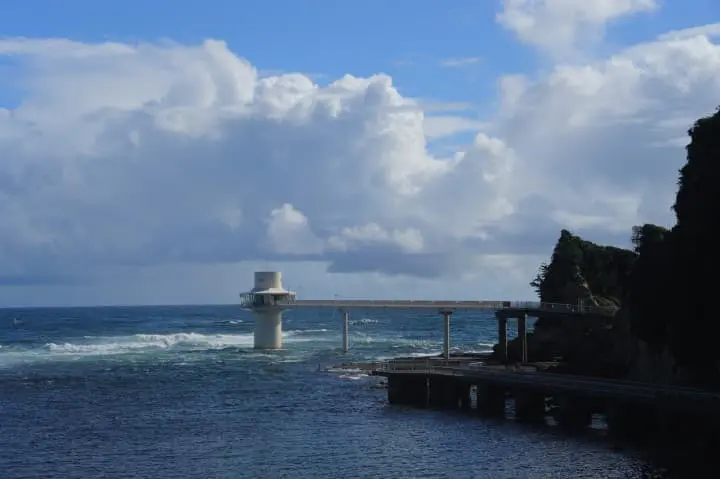
Photo by Pixta
Chiba Prefecture's Katsuura City is known for its stretches of beaches featuring crystal-clear water, great for swimming and playing in the water. In the city you'll be able to visit Katsura Kaichu Park, a park designed to allow you to enjoy the ocean all year round.
The park is located just about 15 minutes on foot from JR Ubara Station. You'll find a intriguing short white tower peeking out from the ocean, acting as the park's landmark. This tower, which seems short from the surface, has an observation deck on its top floor. You'll actually be able to descend further down the tower into the depths of the sea, to observe the scenery under water almost as if you are in a submarine!
The sight of the natural fish swimming in the ocean is completely different from what you would observe at an aquarium. Even adults can't help but get excited about checking out this spot! Ubara Risokyo, a scenic spot overlooking the Pacific Ocean, is also located nearby.
Hotels near Katsuura Undersea Park
18. TRAYCLE Market & Coffee: Linking Producer and Consumer
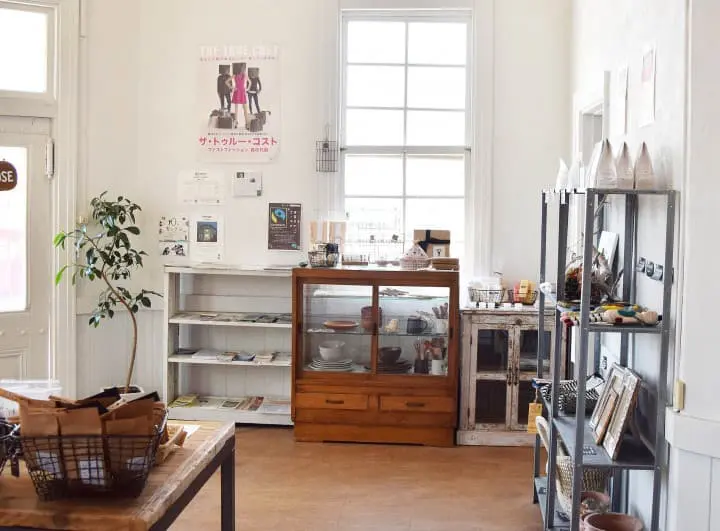
Picture courtesy of TRAYCLE Market & Coffee
"I wanted to start a business that takes part in fair trade and environmentalism," was the owner's desire when establishing TRAYCLE. This shop's carefully selected and tasteful goods all use a fair trade system that gives earnings back to the people who created the products.

Picture courtesy of TRAYCLE Market & Coffee
The shop runs its business in an old Western-style building that was built over 100 years ago in southern Chiba's Tateyama City. The building radiated with nostalgic ambiance.
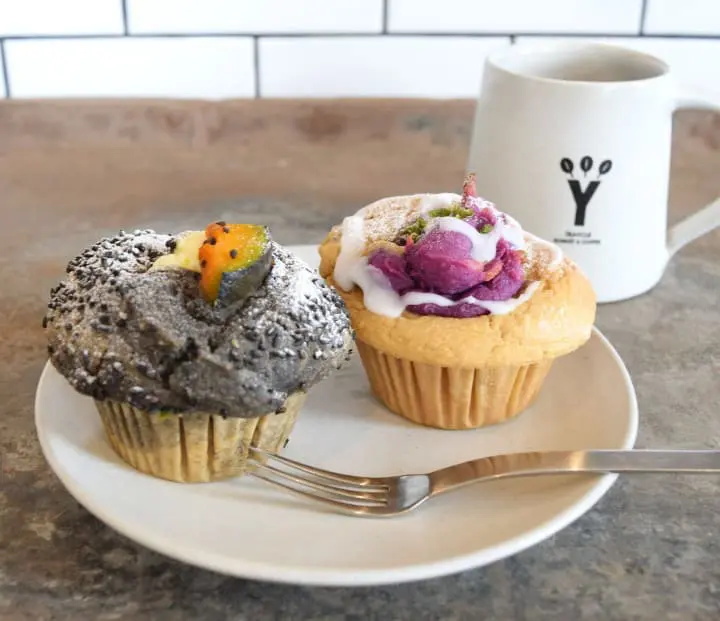
Picture courtesy of TRAYCLE Market & Coffee
The building is also a cafe, and they have a menu available in both Japanese and English. The owner's wife is proficient in English, making this a convenient shop for international travelers. Come and try out their nutritious okara (a byproduct of tofu) muffins and their fair trade coffee. These delectable treats will be sure to fill you with happiness and warmth!
19. Kujukuri Beach: Japan’s Largest Sandy Beach
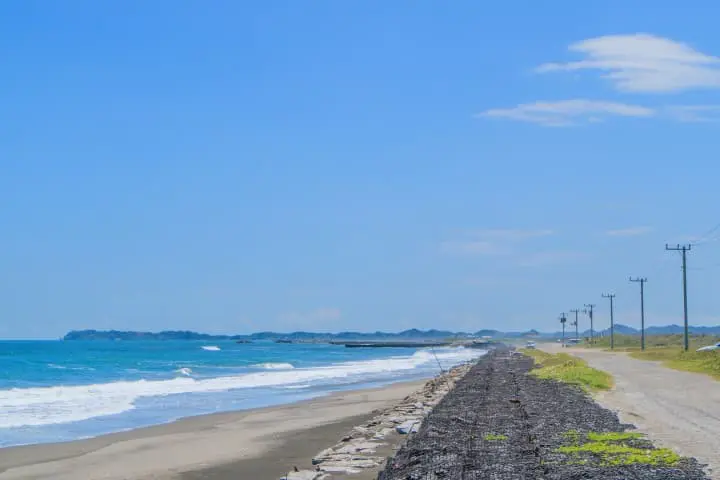
Photo by Pixta
Kujukuri Beach, stretching 66 kilometers along the Pacific coastline in east Chiba, is known as a mecca for surfing and swimming. There are also some nearby spots like the Horizon Observatory (Japanese)—home to an extensive view of the ocean horizon—and the world-famous Inubosaki Lighthouse. Whether you are visiting to surf or not, there are plenty of fun spots to enjoy aside from participating in marine activities here!
For dining, we recommend visiting the Seaside Plaza Kujukuri (Japanese) to savor some freshly caught seafood. Katagai Harbor is a spot that thrives with sardines and is right in front of the plaza. They have a popular food court where you can enjoy various stalls selling fresh seafood caught directly from the harbor, along with freshly made local Kujukuri dishes.
Hotels near Sea Station Kujukuri
Read also
20. Inubosaki Observation Deck: A White-Colored Deck with an Ocean View
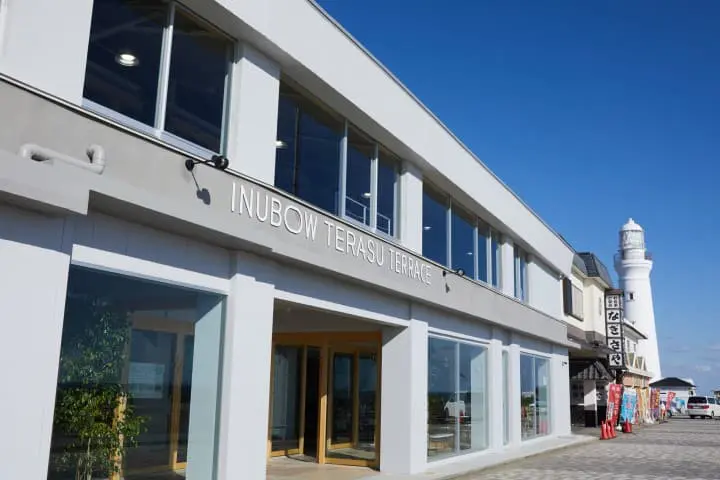
Picture courtesy of Inubow Terasu Terrace
Inubosaki Observation Deck is an iconic spot to visit along the Cape of Inubosaki, located right on the easternmost tip of Chiba. Inubosaki is famous for being the first place where the sun rises in Japan's flatlands. If you're planning on visiting Choshi, you'll definitely want to stop by here to catch the view of the sunrise.
Inubow Terasu Terrace is also a trendy spot to visit. This location popped up in Inubosaki back in January of 2019.

Picture courtesy of Inubow Terasu Terrace
The Inubow Terasu Terrace is two-story building that was built facing the ocean. Inside you'll find a cafe, bakery, and boutiques with an array of different local Choshi products. They also have a wide selection of items that are perfect for souvenirs, such as the locally-made Choshi beer!
The observation terrace on the second floor is a spot where you can get a view of the beautiful morning sun and the breezy ocean. We definitely recommend this stop for your travels!
Must-Try Food in Chiba
Freshly Caught Seafood!
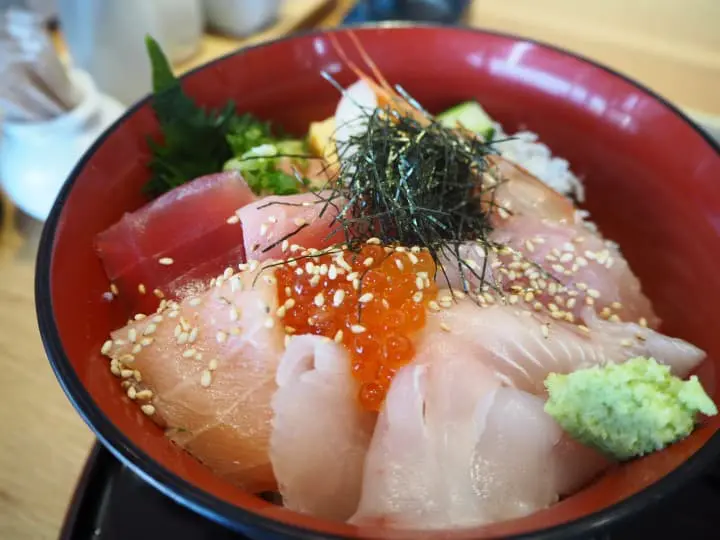
Photo by Pixta
Chiba is a prefecture surrounded by the ocean and is therefore known for its abundance of seafood. Choshi is known as Japan's leading fishing harbor on the Pacific Ocean side of Japan. Here, you can delight in the delectable dishes made with the freshest bounty of seafood from the sea, right at the restaurants sitting near the port.
Hamameshi is one of those restaurants. Their kaisen don (seafood bowls) are topped with a generous portion of sashimi (raw fish) to the point of almost spilling out from the bowl, making it their most popular dishes. The Sanshoku Don with tuna costs 1,600 yen. In the morning you can enjoy their breakfast set, which is priced at a reasonable 500 yen.
MAIWAI, a restaurant directly managed by the Choshi Fisheries Cooperative Association, is another place that is famous for their seafood bowls. Their delicious rice bowls are topped with a wide variety of seasonal fish like tuna, flounder, and horse mackerel, and are priced at 1,980 yen. The restaurant on the port is spacious and allows you to look out onto the ocean while dining on your tasty sashimi bowls!
Katsura Tantanmen – Spicy and Tasty! Local Chiba Noodles
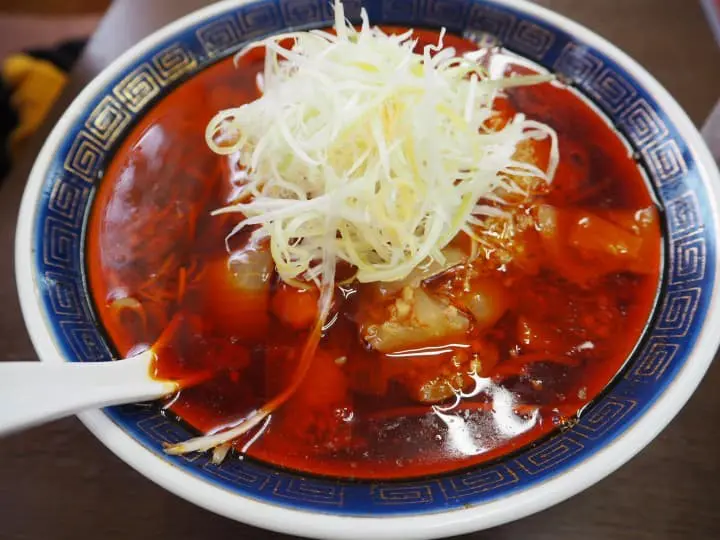
Photo by Pixta
Katsura’s tantanmen (Szechuan spicy soup) noodles, unlike Chinese dandan noodles which are flavored with sesame paste, are made with onions, chili oil, and ground pork. Where Chinese dandan noodles are served without soup, the main feature of tantanmen is its miso and soy sauce-based broth.
There are several specialty restaurants in the port town of Katsura, but the most popular is Ezawa, where this dish is said to have originated. This bowl of noodles grew very popular in Katsura as a dish that helped warm up the bodies of cold fishers who were returning from the sea.
Kodama, a popular local family restaurant, is another well-known Katsura tantanmen shop. The delicious spiciness of the soup is absolutely addictive!
Chiba’s Famous Peanuts
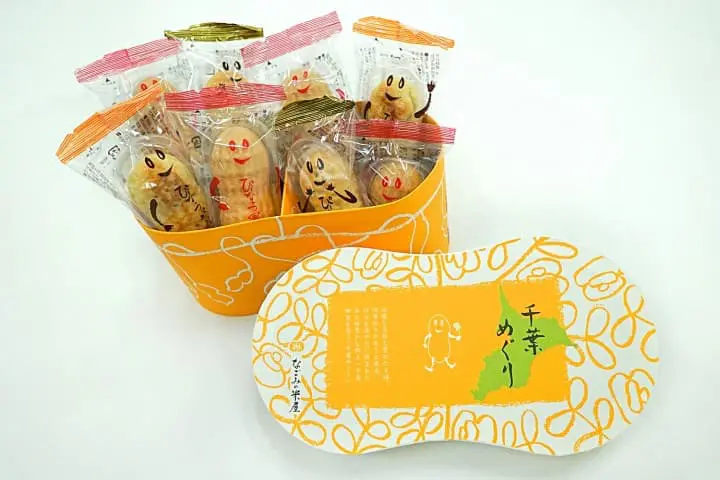
Nagomi Yoneya’s Peanut Monaka
Another specialty product when talking about Chiba, peanuts are something you can't leave out of the discussion. Approximately 80% of all the peanuts produced in Japan are the product of Chiba. The prefecture also produces and sells peanuts in various forms such as peanut butter and desserts made from peanuts.
The peanut monaka (Japanese) from Nagomi Yoneya, a store on Naritasan Omotesando Road, is a definite must-try. These adorable peanut-shaped wafer cakes are filled with a sweet boiled peanut filling.
FAQ
Is Chiba city worth visiting?
Chiba City, the capital of Chiba Prefecture in Japan, offers a mix of urban conveniences, cultural attractions, and natural beauty that make it a worthwhile destination to explore. Highlights include Chiba Port Park with its waterfront views and Chiba Port Tower for panoramic vistas, the Chiba City Museum of Art featuring modern art collections, and Inage Seaside Park known for its cherry blossoms and open spaces. Families can enjoy the Chiba Zoological Park, home to various animals including pandas, while food enthusiasts can sample fresh seafood from Tokyo Bay, a local specialty. With its proximity to Narita International Airport and easy access to Tokyo, Chiba City provides a convenient and diverse option for visitors looking to experience a blend of urban amenities, cultural offerings, and coastal charm in the Greater Tokyo area.
What is Chiba Japan known for?
Chiba Prefecture in Japan is celebrated for a range of attractions and cultural offerings that highlight its diverse appeal. Known for hosting Tokyo Disneyland and DisneySea, it is a hub for entertainment with these iconic theme parks drawing visitors worldwide. Equally significant is Narita International Airport, a major gateway for international travel connecting Japan to global destinations. Chiba's fishing industry, notably in Katsuura, is renowned for its tuna auctions, showcasing the region's high-quality seafood. The coastal town of Choshi captivates with its picturesque Choshi Lighthouse, offering scenic views of the Pacific Ocean. In Sakura City, the captivating cherry blossoms symbolize springtime beauty, attracting visitors to enjoy the vibrant blooms and festivals. Mount Nokogiri stands out for its cultural landmarks like Nihon-ji Temple and the Great Buddha statue, set amidst hiking trails and panoramic vistas. Chiba Port Tower in Chiba City provides stunning bay views, complementing the prefecture's agricultural prowess, notably in crops like peanuts and sweet potatoes, celebrated at local markets and festivals. This mix of natural, cultural, and agricultural richness underscores Chiba's multifaceted charm as a captivating destination in the Greater Tokyo area.
How much is a train from Tokyo to Chiba?
The cost of a train journey from Tokyo to Chiba varies depending on the train line, the type of service, and the specific stations of departure and arrival. Typically, you can take various train lines to travel from Tokyo to Chiba, such as JR (Japan Railways) lines, Keisei Line, or Toei Line. The fare for a one-way trip from Tokyo Station to Chiba Station can range from around 500 to 1,000 yen for a regular commuter train, with faster and more direct services like rapid trains or limited express trains potentially costing more.
For a more precise estimate of the train fare from Tokyo to Chiba, it is recommended to check the current rates through a transportation app, the official websites of the specific train operators, or at the train stations themselves. Additionally, considering the Japan Rail Pass or other regional rail passes could be cost-effective if you plan to do multiple journeys within Japan during your visit.
What is the coldest month in Chiba?
In Chiba, Japan, the coldest month is typically January, which marks the peak of winter in the region. During January, Chiba experiences its lowest average temperatures of the year, with daytime highs ranging from around 9 to 11 degrees Celsius (48 to 52 degrees Fahrenheit) and nighttime lows dropping to approximately 2 to 4 degrees Celsius (36 to 39 degrees Fahrenheit).
January is characterized by cold weather, occasional rainfall, and the possibility of snow in some parts of Chiba, particularly in mountainous areas or regions further inland. Visitors and residents alike are advised to dress warmly, especially in the evenings and early mornings when temperatures can be at their chilliest. It's also a time when indoor activities, hot springs visits, and cozy dining experiences can be particularly inviting to combat the winter cold in Chiba.
Is Chiba good for tourists?
Chiba, located east of Tokyo in Japan, is a multifaceted destination that offers a mix of attractions appealing to tourists. Home to Tokyo Disneyland and Tokyo DisneySea, Chiba draws visitors seeking magical experiences in the world of Disney. Narita International Airport in Chiba serves as a primary entry point, enhancing the region's accessibility and serving as a common starting point for travelers. Chiba's stunning beaches like Kujukuri Beach and Onjuku Beach provide opportunities for sun, sea, and sand relaxation. Historical and cultural sites such as Naritasan Shinsho-ji Temple and Chiba Castle ruins offer insights into local heritage, while natural beauty abounds in locations like the Boso Peninsula, Mount Nokogiri, and Minami Boso. The prefecture's culinary scene showcases fresh seafood, local specialties like peanuts and sweet potatoes, and a variety of festivals throughout the year celebrating traditional culture and local traditions, making Chiba a well-rounded destination for tourists seeking a diverse and enriching experience in Japan.
Is Chiba considered Tokyo?
Chiba Prefecture is a separate administrative region from Tokyo, despite being located adjacent to the capital and forming part of the Greater Tokyo Area. With Chiba City as its capital, Chiba maintains its distinct identity with its own local government, municipalities, and cultural nuances. Although Chiba and Tokyo share a close geographical proximity and are interconnected through transportation links like Narita International Airport, each prefecture possesses unique characteristics, histories, and attractions that contribute to their individual identities within the wider Tokyo metropolitan region.
Are you ready for a fun-filled trip to Chiba? The routes you can choose and the facilities you'll be able to visit will differ depending on the season you will be visiting in, so how you enjoy Tokyo's neighboring prefecture will depend on your own travel style.
Travel beyond Tokyo to experience all that Chiba has to offer!
Main image courtesy of Pixta
Lives in Tokyo. My hobbies are traveling and appreciating art. I have an eye for delicious food, and after living in Beijing, China for five years, I discovered the deliciousness of hot pot.




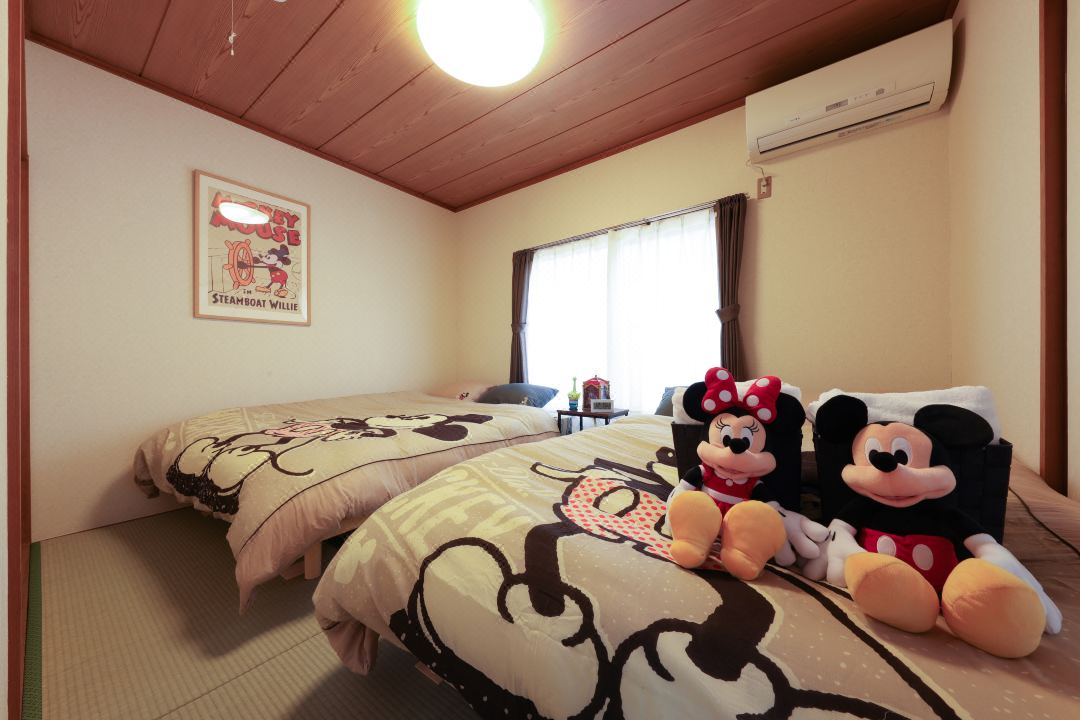

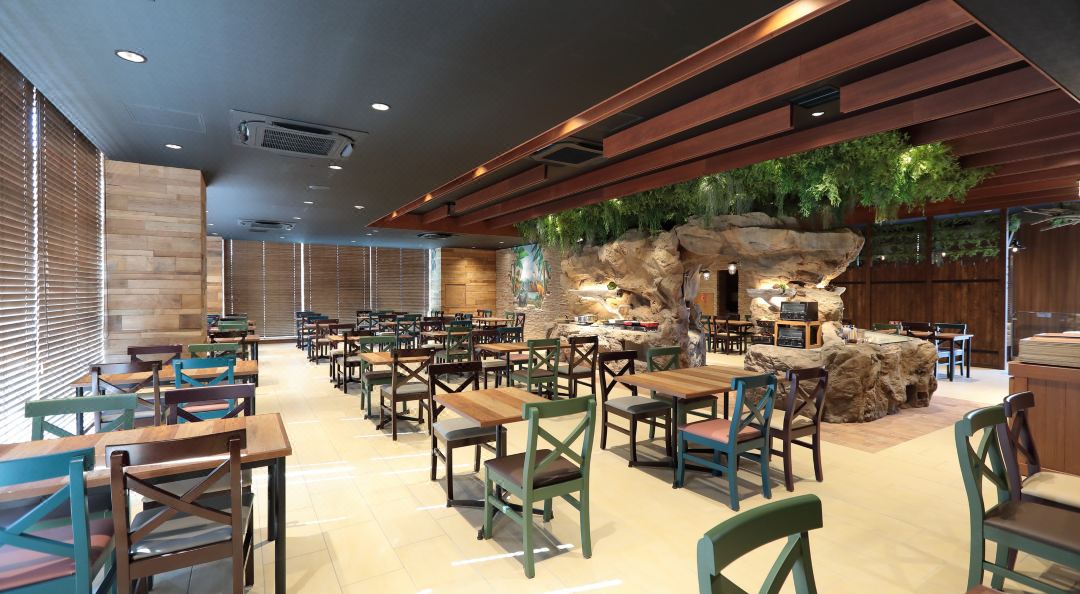
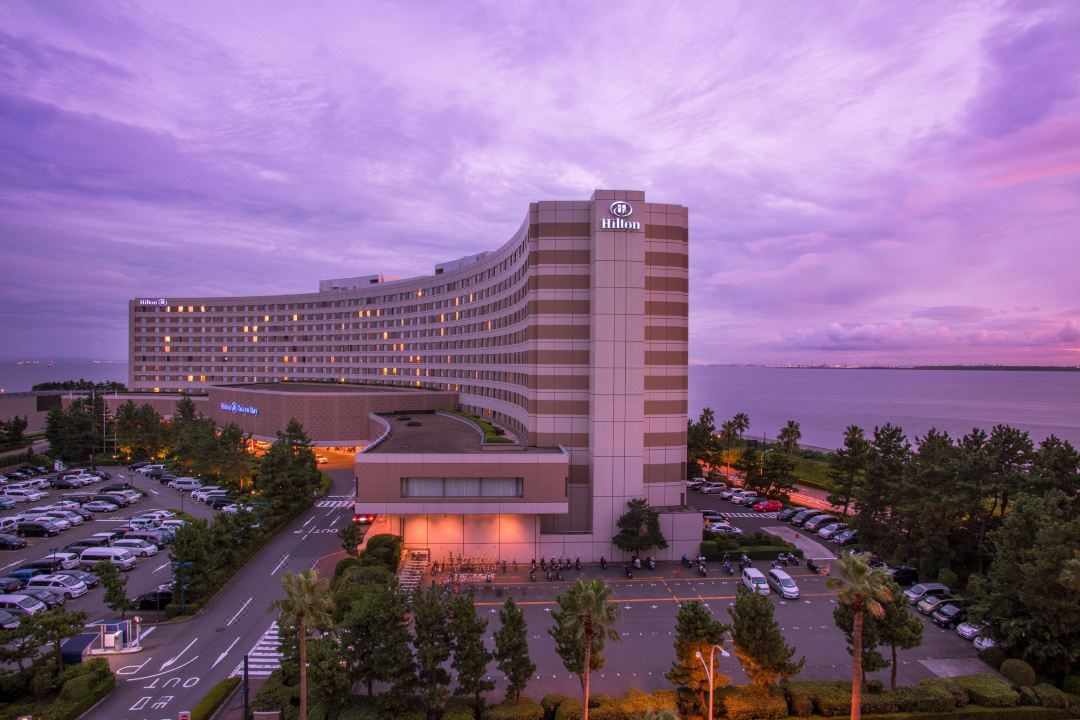








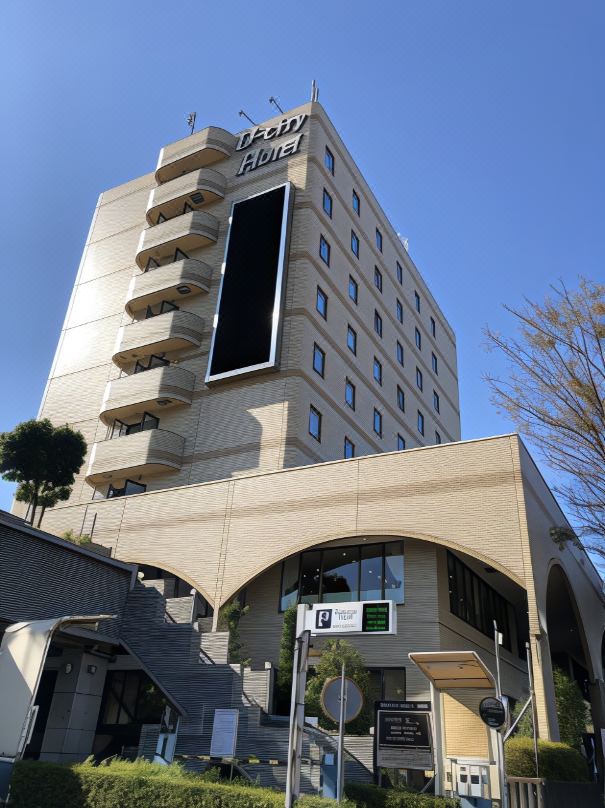





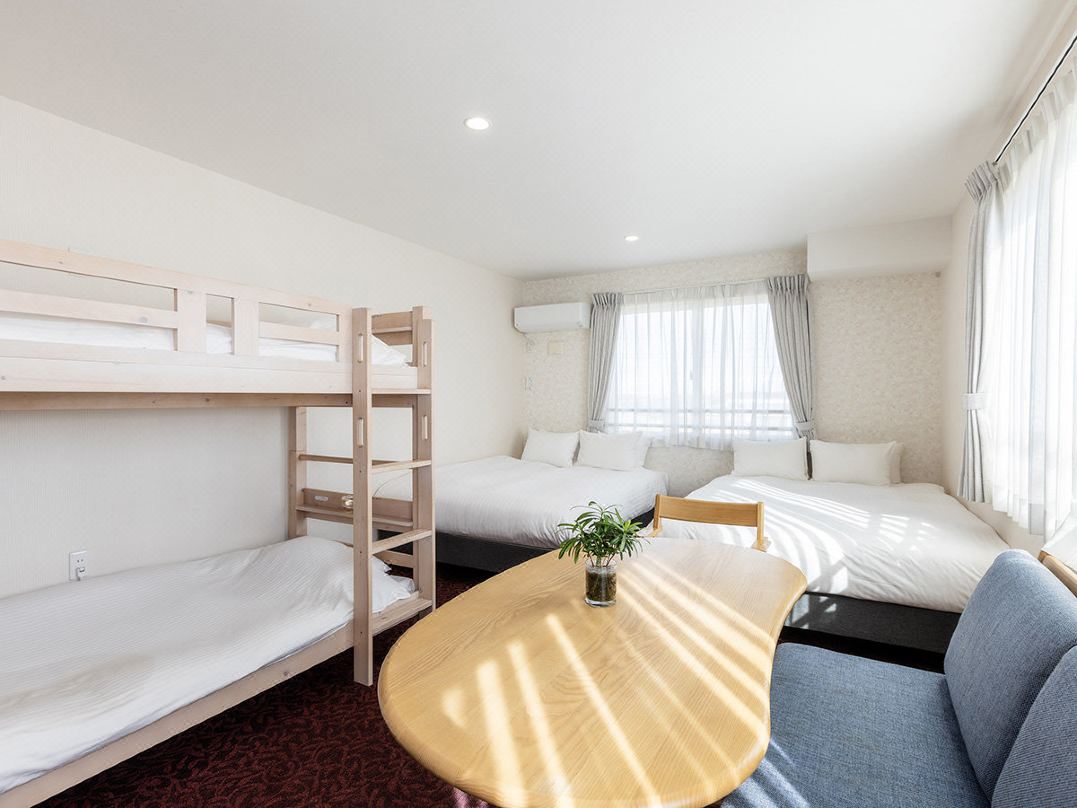





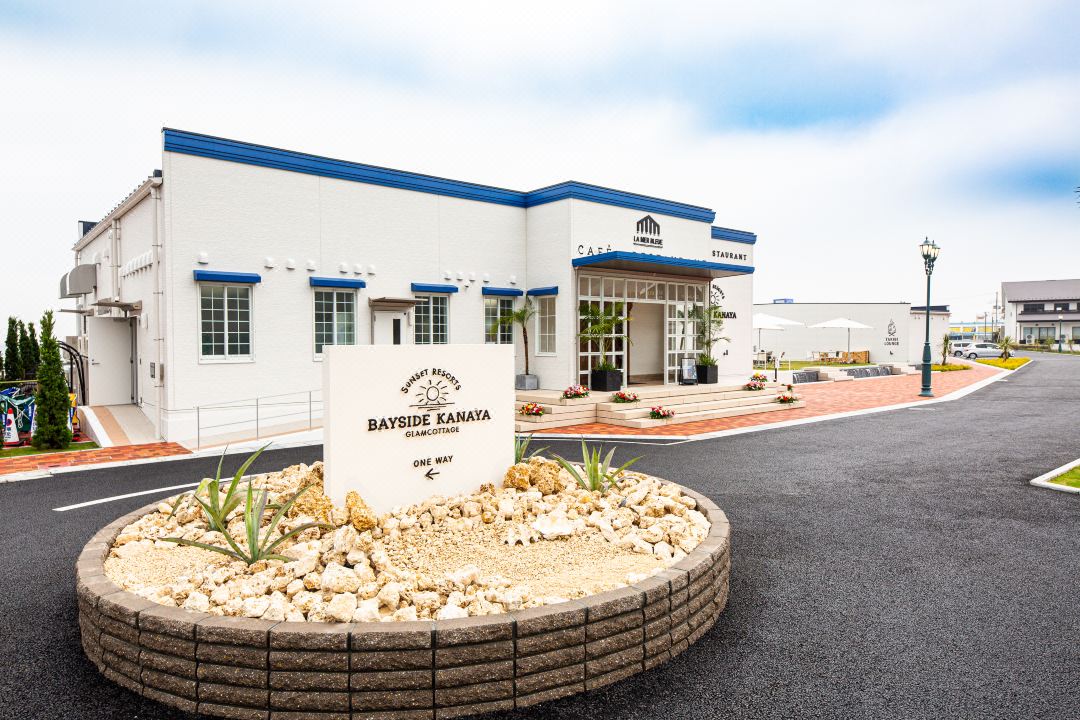







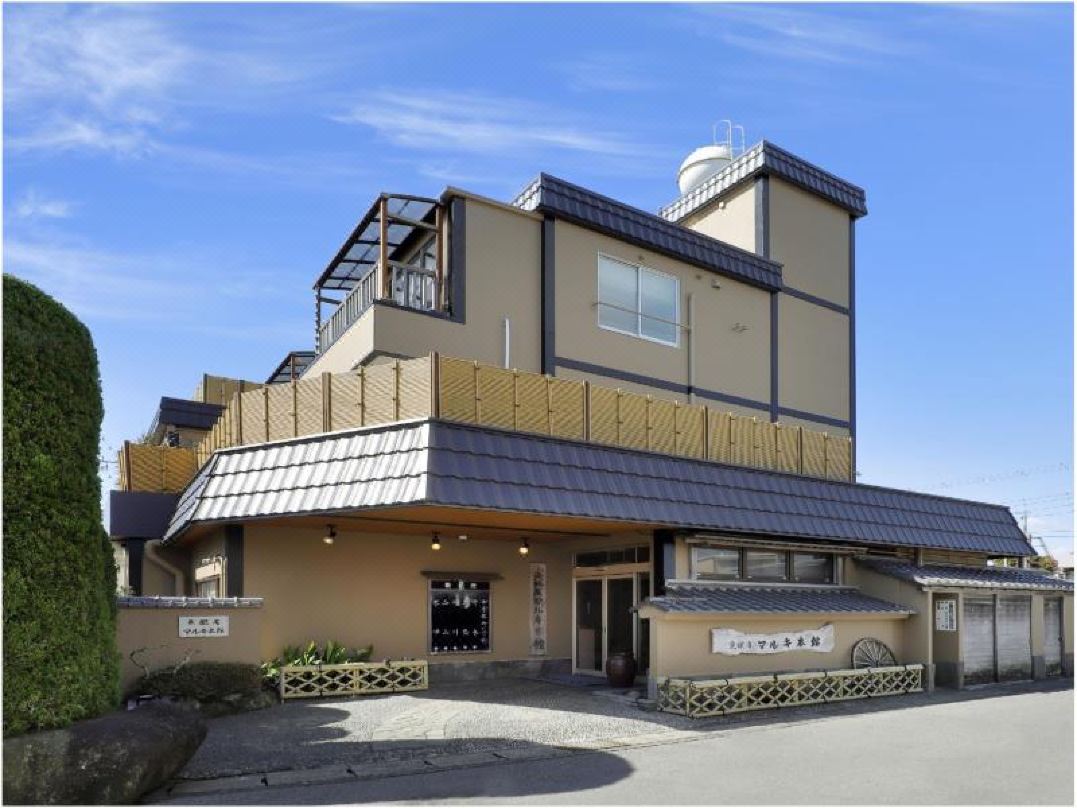
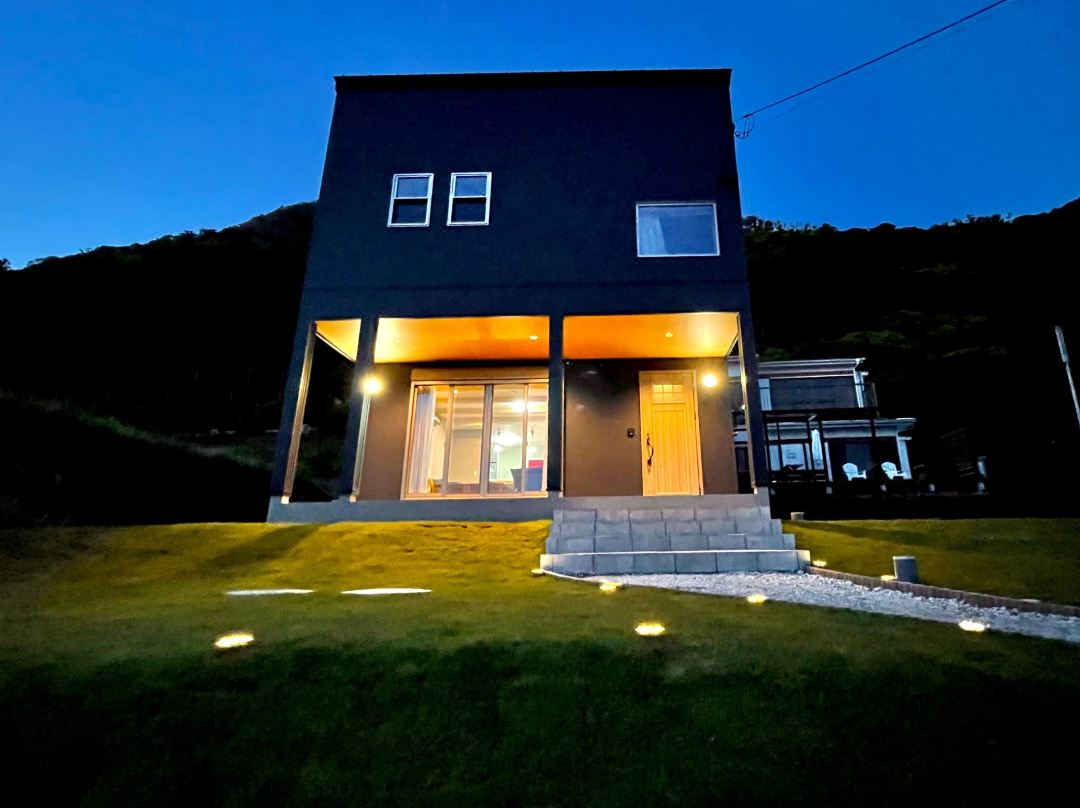





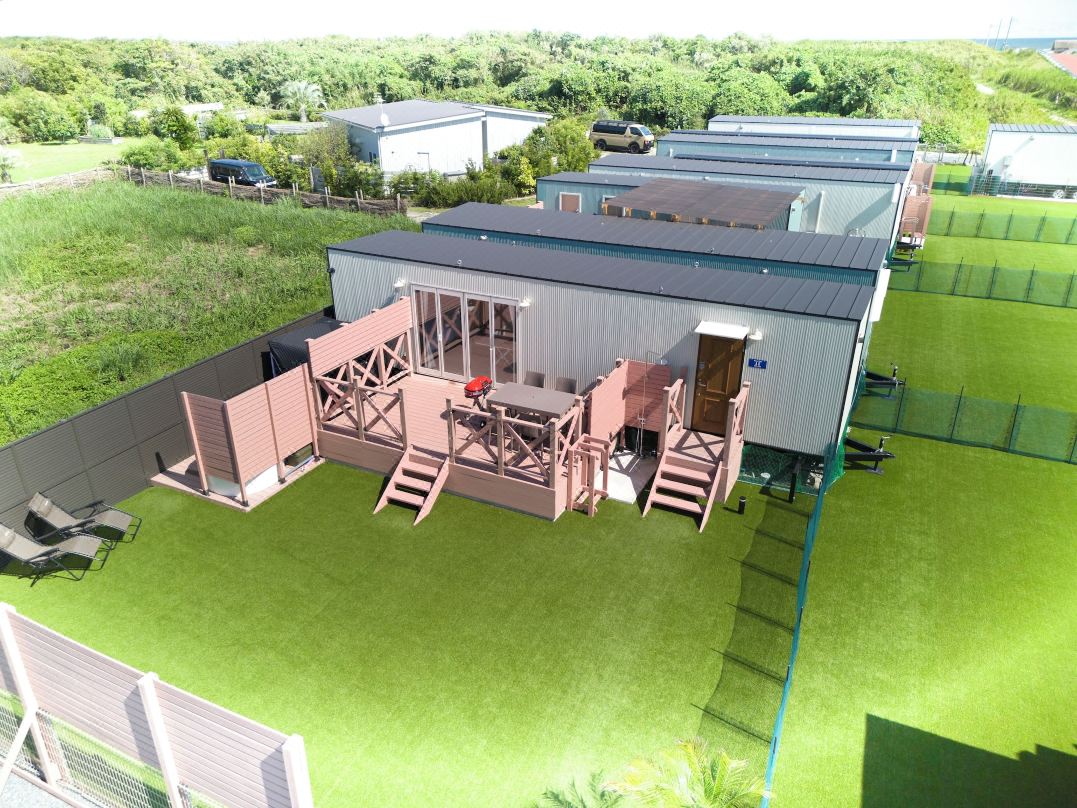









































![[Coupon Available] Attention Overseas Winter Sports Fans! Nagano's Sports Depot Has Evolved](https://resources.matcha-jp.com/resize/720x2000/2026/01/05-254819.webp)
![[2 hours from Tokyo ] 10 Quiet and Breathtaking Views of Mount Fuji in Yamanashi Hokuto City , Yamanashi - Part 2](https://resources.matcha-jp.com/resize/720x2000/2025/12/16-253037.webp)
